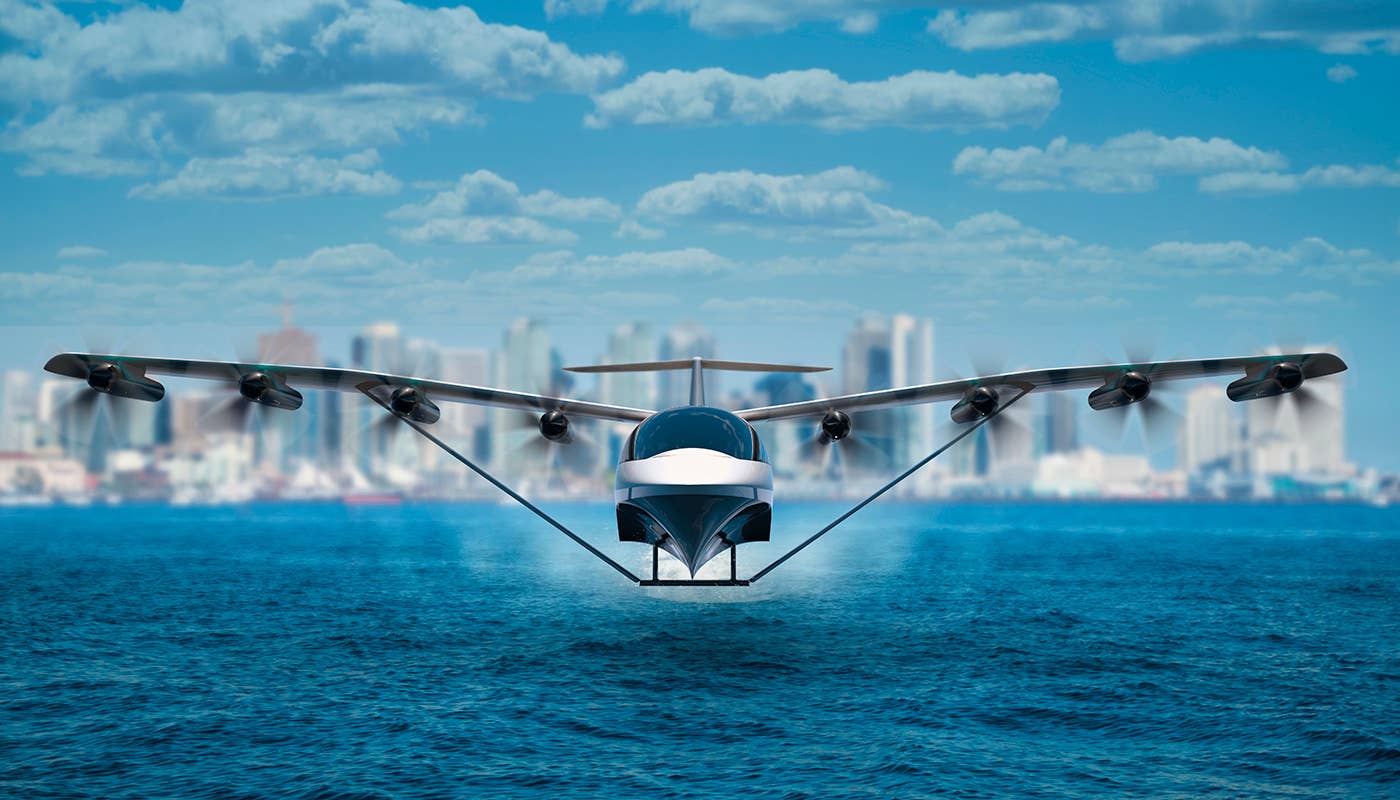Moore Brothers, Regent Craft Partner to Build New Seaglider Aircraft
Electric-powered vehicles, which resemble seaplanes, will operate over water routes connecting coastal cities.

Seagliders will cruise at 180 mph for distances up to 180 miles, and as far as 500 miles. [Courtesy: Regent Craft]
Flying in ground effect is often a negative experience for pilots, meaning they are landing with too much energy or trying to take off with not quite enough. But over water, it can be a fast, efficient way to get around.
Moore Brothers Co., a maker of composite boat components, is working with research and development company Regent Craft Inc. to build seagliders, vehicles that combine elements of boats and aircraft.
Essentially flying in ground effect, seagliders will cruise at 180 mph for distances up to 180 miles, and as far as 500 miles as battery technology advances, Boston-based Regent says.
The companies say they expect the electric-powered vehicles, which resemble seaplanes, to operate over water routes connecting coastal cities such as New York and Boston. Regent says they will generate a fraction of the noise and emissions of the ferries and airlines that currently serve these regional routes.
Moore Brothers, based in Bristol, Rhode Island, has been part of the New England boat-building community for generations, says its president, Samuel Moore. The company designs, develops, and manufactures rudders, steering systems, keels, and structural parts for a range of vessels including America’s Cup racing yachts, Moore says.
Working on the seaglider “is a logical next step for us,” according to Moore, who added that the company will expand its plant by 5,000 square feet and add 10 workers as it prepares to ramp up seaglider production.
Moore says the companies are almost finished assembling a quarter-scale, radio-controlled prototype of the vehicle that they expect to test in Tampa, Florida, in the next week or two. Regent says it plans to bring seagliders to market within five years.
How They Work
The seaglider combines a traditional boat-like hull with hydrofoils and wings for transitioning from floating to flying. It is designed to float away from the dock like a boat and rise onto the foils as it gains speed. The foils allow it to go fast enough to rise off the water completely while remaining in ground effect, which requires less lift than flying to higher altitudes.
The idea of using ground effect to travel long distances quickly, often carrying heavy loads, is not new. Designers have proposed and tested numerous concepts and prototypes throughout aviation history. Probably the best-known are the huge, jet-powered Soviet ekranoplans designed in the 1970s. Modern carbon-fiber construction techniques and electric power systems could give the concept new life.

Sign-up for newsletters & special offers!
Get the latest FLYING stories & special offers delivered directly to your inbox






